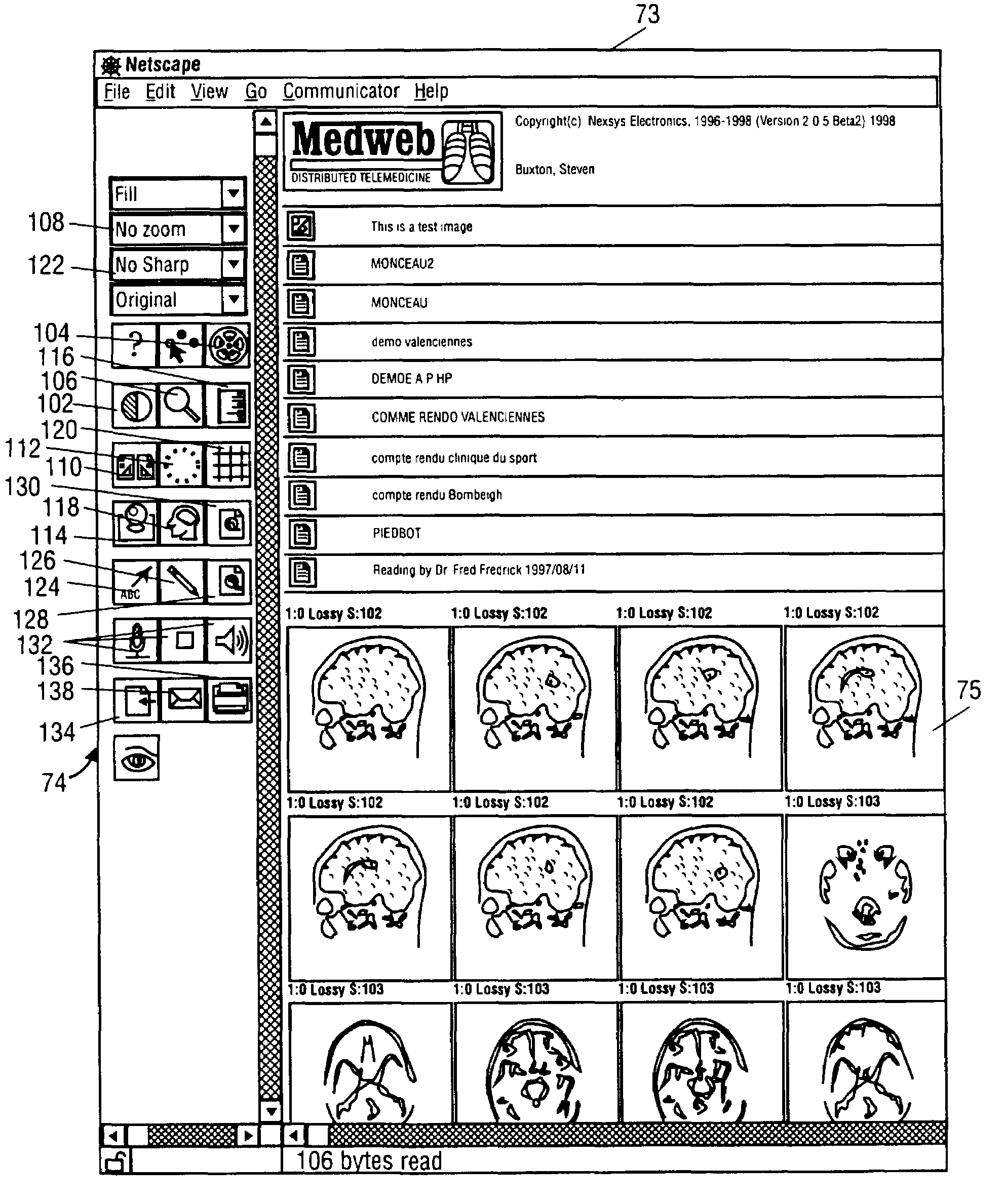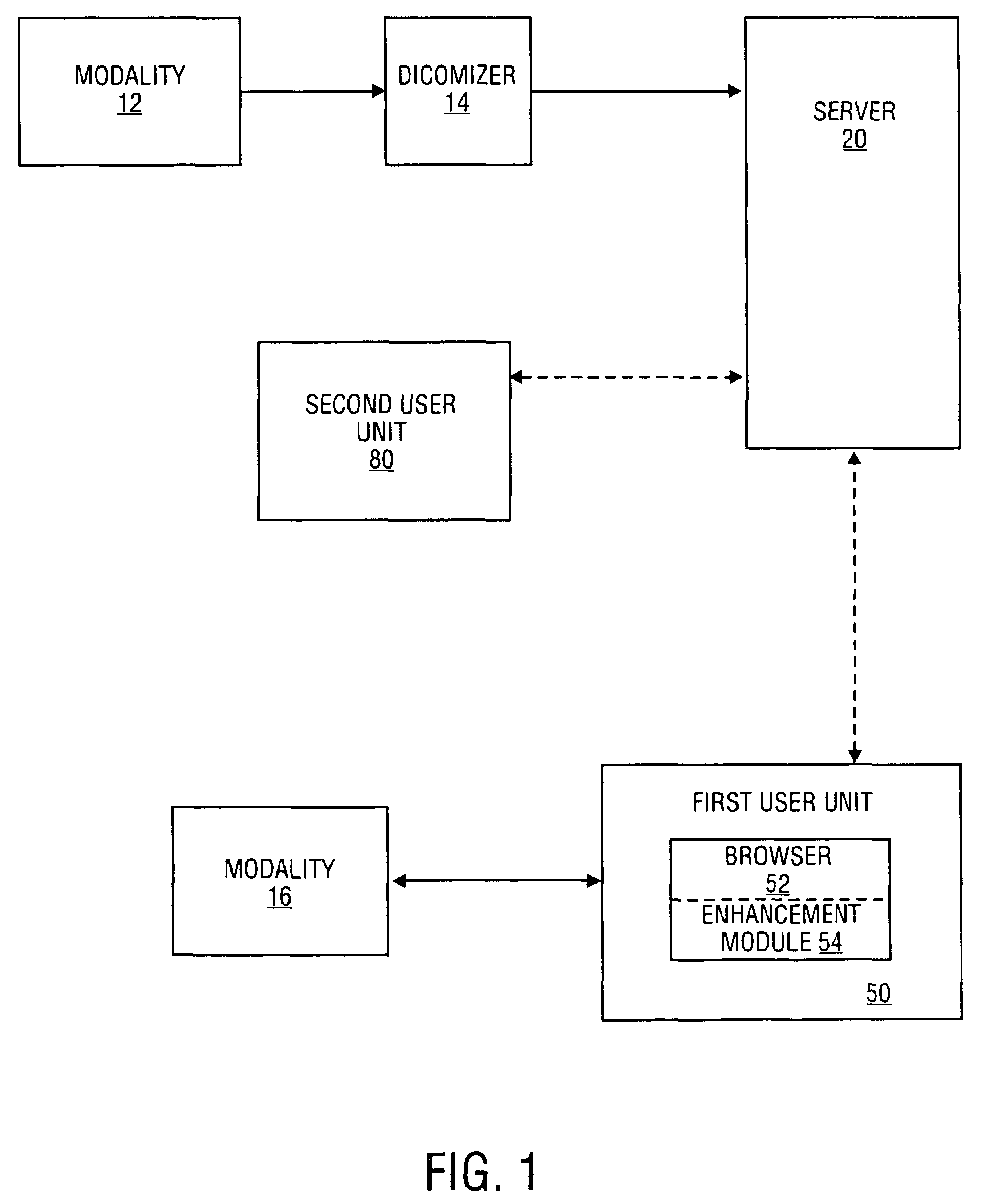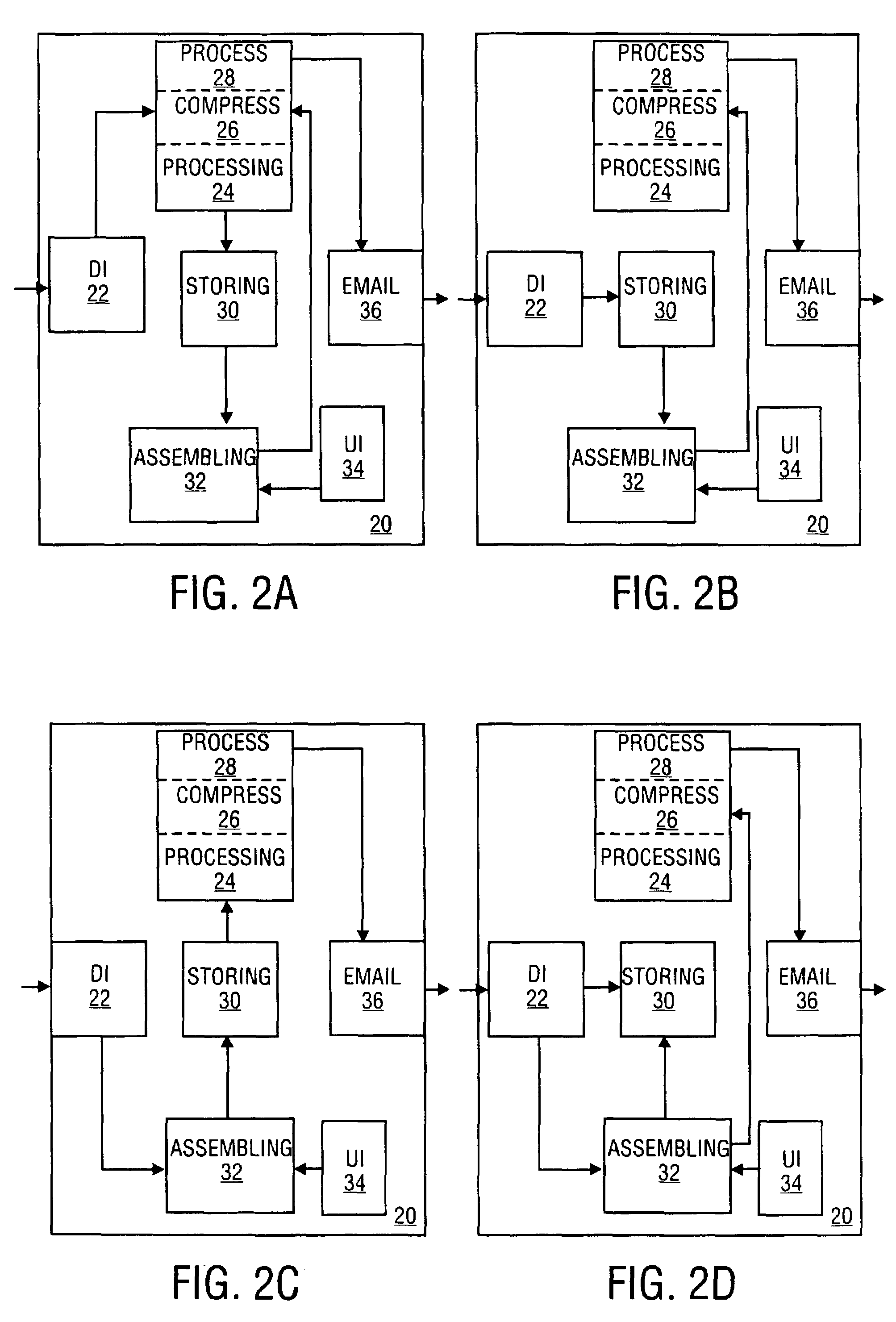Medical network system and method for transfer of information
a network system and information technology, applied in the field of multimedia information transfer, can solve the problems of cost-intensive effort to share data among a number of practitioners, inability to achieve flexibility in current systems, and limited use of each server
- Summary
- Abstract
- Description
- Claims
- Application Information
AI Technical Summary
Benefits of technology
Problems solved by technology
Method used
Image
Examples
Embodiment Construction
[0033]The Medical Network System and Method for Transfer of Information described below is configured to provide a rich variety of image manipulation, viewing and annotation tools for review of information and transfer of the information to remote use a The system utilizes browser and / or e-mail enhancement units, such as may be embodied in a plug-in for Netscape-brand browser interfaces (e.g., Netscape Navigator) or MIME interfaces, or an ActiveX control for a Microsoft-brand browser interface (e.g., Internet Explorer), to provide this rich application environment. By incorporating advanced functionality into a down-loadable browser enhancement unit, a user need only have available basic computer equipment, such as an off-the-shelf personal computer (PC) equipped with an Internet browser. Furthermore, the integrated functionality provided by the present system allows correspondents anywhere on the Internet to instantly have the same tool kit.
[0034]The data that is transferred by the...
PUM
 Login to View More
Login to View More Abstract
Description
Claims
Application Information
 Login to View More
Login to View More - R&D
- Intellectual Property
- Life Sciences
- Materials
- Tech Scout
- Unparalleled Data Quality
- Higher Quality Content
- 60% Fewer Hallucinations
Browse by: Latest US Patents, China's latest patents, Technical Efficacy Thesaurus, Application Domain, Technology Topic, Popular Technical Reports.
© 2025 PatSnap. All rights reserved.Legal|Privacy policy|Modern Slavery Act Transparency Statement|Sitemap|About US| Contact US: help@patsnap.com



